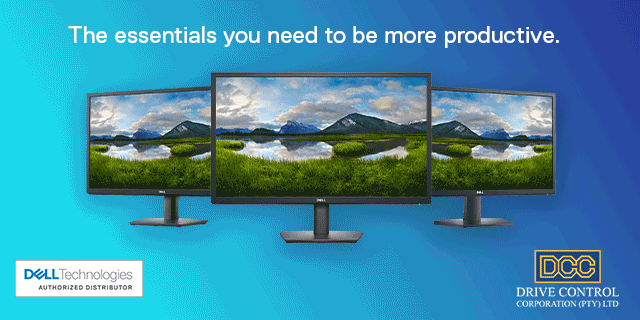Solar, battery backup or generator? Loadshedding alternative power options
By Industry Contributor 11 July 2022 | Categories: news
NEWS SPONSORED BY DELL E-SERIES 24" MONITORS FROM DCC:
By Christiaan Hattingh, Managing Director, AWPower, an energy solutions provider
Loadshedding is not going away, and most people are considering alternative solutions to keep their power on.
The good news is that you can use your investments in backup power to bring your electricity costs down over time and also decrease your reliance on the national grid.
A good option to consider, if you are looking for a long-term solution to ensure power during loadshedding, is a hybrid solar system.
It will provide enough power to keep essentials running during power outages as well as enable you to save money on electricity. This system allows you to harvest renewable energy from the sun, use it to power some of your loads, and store it in batteries for periods of loadshedding.
A solar hybrid system consists of the following:
· batteries - which provide energy security during load shedding.
· solar panels - which provide energy savings.
· a hybrid inverter - which controls the energy flow between the grid, solar panels, batteries and electrical loads.
A hybrid inverter can choose between using the batteries or grid as a power source for your essential loads and will supplement this power with the energy generated from solar panels. The batteries will keep your essentials running when the grid goes down.
Installing solar panels will also mean that you are doing your bit to lessen national demand for electricity, helping Eskom to reduce the need for loadshedding. While a hybrid solar system brings you some freedom from loadshedding and rising electrical tariffs, it does come at an initial cost.
Luckily, hybrid solar systems are modular and can be installed in stages, allowing you to spread the cost over time. You can start with the inverter and batteries and add solar panels later, or you could start with solar panels and add batteries later. It all depends on what your priorities are: energy security when the grid goes down (batteries) or savings on electricity (solar panels). Solar panels will pay for themselves in electricity savings over a number of years.
For battery backup systems, lithium-ion batteries are recommended over lead-acid (deep cycle AGM) batteries. Lithium-ion batteries have a higher upfront cost, but last 10 years or more compared with the two-to-three-year lifespan of lead-acid batteries.
Over a decade, the lithium-ion solution will be around 25% cheaper than replacing lead-acid batteries as their lifespan ends.
The installation process – here’s what to expect
When installing a battery backup system, you will most probably need some load splitting. This is the process of separating all electrical loads into the essential loads (to be powered by the inverter and batteries during loadshedding) and the non-essential loads (that won’t have power during loadshedding).
When installing solar PV panels on a property, your local municipality usually requires you to register the solar installation.
Not all inverters are accepted when registering a system in some municipalities. Be sure to work with a reputable installer who will use the right equipment and register your system properly so you can avoid future issues with your municipality.
But what about a battery backup or a generator?
Your other backup power options can be divided into two main categories: battery backup or a generator.
· Generators are suited for industrial businesses or large companies that need to run power-intensive loads such as data centres, commercial refrigerators or production lines.
· Compared with generators, battery backup systems are quieter, less prone to breaking down, cleaner (no carbon monoxide fumes), and more affordable to run since they don’t depend on fuel. The initial investment required is more, but over time becomes the more affordable solution especially if integrated with a solar system.
Many businesses thus supplement their generators with more cost-effective battery backup systems for lighter loads like office lighting, desktop computers and point of sale systems. Others only use their generator as a backup to their battery-based systems and those with lighter power needs may only need a battery-based solution.
When it comes to battery backup systems, there are many options on the market, catering to a range of budgets and energy needs.
Keeping the lights on
To run a business in a tough climate becomes even harder when facing regular power cuts. Whether working from home or in the office, with loadshedding here to stay, installing a battery backup solution is a no-brainer and a must-have for almost any business to ensure continuity and safeguard productivity.
Most Read Articles

Have Your Say
What new tech or developments are you most anticipating this year?




